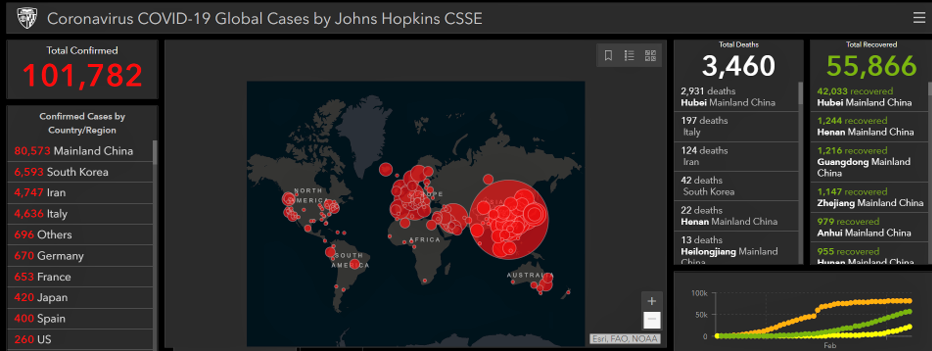We start each day’s update with this message from DFS Group when the retailer reopened its stores in Macau on 20 February after a 13-day closure.
Published in Chinese, it translates as:
No winter can’t be passed
No spring will not come
For updates from 16 April onwards click here.
15 April
Hong Kong
Hong Kong International Airport (HKIA) passenger traffic fell by -91% year-on-year in March as the COVID-19 crisis hit hard.
From 25 March, all transit and transfer services at HKIA have been suspended, and all non-Hong Kong residents coming from overseas countries and regions by plane are denied entry to Hong Kong.
These factors led to weak travel demand in March, and airlines have suspended more flights. Visitor traffic, which was affected the most, posted a -97% year-on-year decrease. Transfer/transit traffic and Hong Kong resident travel declined by -91% and -83%, respectively.
Over the first quarter of the year, HKIA handled 8.2 million passengers, down by -56.5%. On a 12-month rolling basis, passenger volume dropped -18.9% to 60.9 million.
Thailand
Having introduced a ban on international flights to Thailand from 7-18 April, the Civil Aviation Authority of Thailand has extended the measure until 30 April. The move was confirmed today in a statement by Airports of Thailand.
“This is to ensure continuity and effectiveness of precautionary measures against the COVID-19 outbreak,” said the Civil Aviation Authority.
As reported, operations at Phuket International Airport have been suspended until 30 April. That followed the local government’s announcement that it was temporarily closing all land and sea entry and exit points from 30 March until 30 April.
Switzerland
Zürich Airport turnover from retail and dining fell by -55.5% year-on-year in March to CHF20.5 million (US$21.3 million) due to the COVID-19 crisis. The turnover figure for the first quarter was down by -18.9% to 103.5 million (US$107.6 million).
The figures were driven by the sharp fall in passenger traffic, which was down by -63.2% in March and -23.4% in the quarter.
Click here for the full story.
Australia
“Opportunity in adversity” is how Brisbane Airport Corporation (BAC) describes the launch this week of BNE Marketplace, a new online airport retail home delivery service.
Developed with its retailers, it offers them the chance to shift stock that remains unsold while physical stores are closed or there is little passing trade during the COVID-19 crisis. BAC acted quickly too, going from concept to a full ecommerce site in just 16 days.
Full story here.
Germany/International
Frankfurt Airport is experiencing a near-total decline in passenger volumes. During Week 15 (April 6-12), traffic plummeted -96.8% year-on-year to 46,338 passengers. Aircraft movements shrank by -86.3% to 1,435 takeoffs and landings. The shocking numbers follow a -95.2% decline in passenger traffic the previous week.
International Group airports also report noticeable decline in traffic
In March 2020, for the first time, the COVID-19 pandemic impacted Fraport’s entire international portfolio – with passenger traffic dropping noticeably at all Group airports. The April numbers are certain to be much worse.
Each country implemented specific measures to counter the virus, Fraport said. Some countries introduced travel restrictions (for example, Brazil, Bulgaria, Russia, India and China), while other countries temporarily suspended flight operations (Ljubljana and Lima).
Slovenia’s Ljubljana Airport registered a -72.8% decline to 36,409 passengers. Combined traffic for Fraport’s two Brazilian airports in Fortaleza and Porto Alegre fell by -37.5% to 773,745 passengers. Lima Airport in Peru experienced a -47.8% fall to 962,507. Combined passenger figures for the 14 Greek regional airports shrank by -58.8% to 293,525 passengers. Bulgaria’s Twin Star airports in Burgas and Varna received 39,916 passengers, down -46.1% year-on-year.
At Antalya Airport in Turkey, passenger traffic declined -46.9% to 570,013. At St. Petersburg’s Pulkovo Airport in Russia, volumes fell -27.5% to 964,874. With about 1.3 million passengers in March 2020, Xi’an Airport in China recorded -66.1% fewer passengers compared to the same month last year.
South Korea
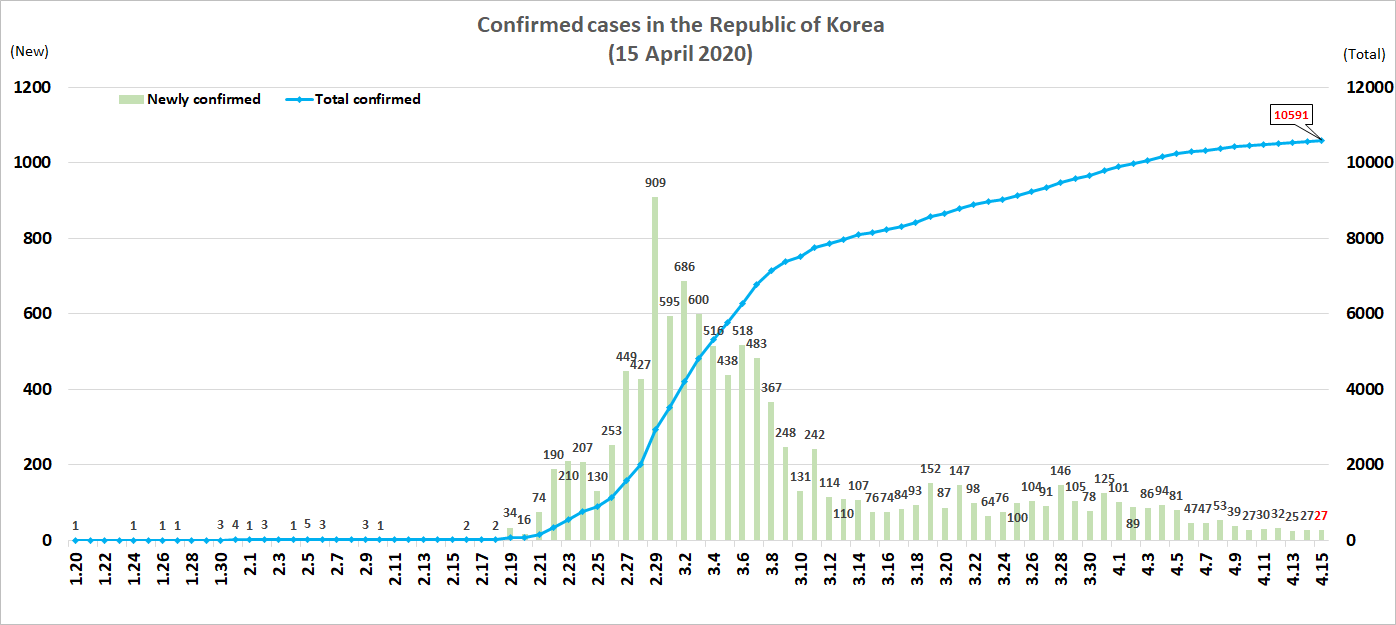

Greater China

International

14 April
Switzerland
Dufry’s Board has postponed the company’s Ordinary General Meeting of Shareholders that was scheduled for 7 May. A new date will be planned for May or June.
The retailer said: “The postponement allows the company to adapt to the continuing Covid-19 situation, including the regulations and prohibition of public meetings and the travel restrictions imposed by the Swiss Federal Council.”
International
The International Air Transport Association (IATA) has said that airline industry passenger revenues could fall by -55% or US$314 billion in 2020 (versus 2019) due to the impact of travel restrictions and the expected global recession brought on by the COVID-19 crisis.
IATA Director General and CEO Alexandre de Juniac said: “The industry’s outlook grows darker by the day. The scale of the crisis makes a sharp V-shaped recovery unlikely. Realistically, it will be a U-shaped recovery with domestic travel coming back faster than the international market. We could see more than half of passenger revenues disappear. Airlines could burn through US$61 billion of cash reserves in the second quarter alone. That puts at risk 25 million jobs dependent on aviation. And without urgent relief, many airlines will not survive to lead the economic recovery.”
Full story here.
China
Wuhan Tianhe International Airport reopened and resumed domestic flights on 8 April, with 88 stores and restaurants from Lagardère Travel Retail now trading again after a 76-day lockdown of the city and region. Chinese authorities lifted the ban on travel after a fall in the number of COVID-19 cases in Wuhan and Hubei Province, the original heart of the outbreak.
The reopening underlines the solid recovery already under way in Chinese aviation. Click here for more details.
International
The Chinese airline market has shown further signs of recovery with seat capacity volumes rising by +7.2% in the week beginning 13 April compared to last week, according to flight schedules analyst OAG. The growth was driven by an additional 600,000 seats in the Chinese domestic market. OAG said this was spread across several major airlines that are responding to increased demand with the seasonal May holidays expected to lead to further recovery.
In line with the capacity expansion, the three leading Chinese airlines – China Southern, China Eastern and Air China – all report increases in week on week capacity, said OAG. China Southern has added +19% capacity in the week though it is still operating less than half of the capacity it had in mid-January. China Eastern has added +3% week-on-week capacity growth although it has -59% fewer seats than 12 weeks ago.

At global level, 5 million seats were removed from the market for the weeks ahead (beginning this week), with 54 million removed in the past four weeks. The slowdown in overall capacity reductions this week suggests that many markets are nearing the bottom, with less than 15% of historic capacity being operated.
Western Europe, Southwest Pacific and Lower South America all report capacity that is -90% below the levels planned in the week of 20 January.
In general, domestic markets have held up better than international, which have been hit hard by travel restrictions between states. Compared to mid-January, global domestic capacity has fallen by -57%, with international down by -88%. Domestic capacity now accounts for 85% of all seats being supplied compared to 61% at the beginning of the COVID-19 crisis, said OAG.
UK
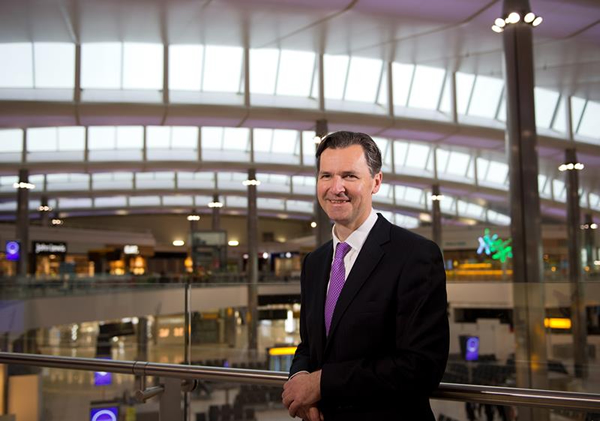
Extraordinary times require extraordinary measures. With passenger numbers expected to plummet by -90% year-on-year in April, Heathrow Airport will consolidate operations into Terminals 2 and 5 only over coming weeks.
March passenger numbers at Heathrow Airport in London shrunk by -52% year-on-year, as the UK entered lockdown, the company said today in a statement. Many of the 3 million journeys made were repatriations, following travel restrictions across various markets as well as the Foreign and Commenwealth Office’s advice against all but essential travel.
Heathrow Airport said that the situation is expected to continue as initial forecasts show passenger demand in April decreasing by over -90%, with “lasting and significant industry-wide effects” predicted.
In line with these forecasts, Heathrow moved to single runway operations on 6 April and over the coming weeks will consolidate its terminal operations. The move will protect long-term jobs at the airport by reducing operating costs, helping Heathrow to remain financially resilient, the company said.
“Heathrow continues to serve the nation by keeping vital supply lines open, and helping people get home. Now is the time to agree a common international standard for healthcare screening in airports so that when this crisis recedes, people can travel with confidence and we can get the British economy moving again.” – Heathrow CEO John Holland-Kaye
Heathrow is now using its available capacity to prioritise cargo flights with medical supplies. The airport company said that it is well-placed to receive time-critical and temperature-sensitive medical supplies, such as ventilators, medicines and COVID-19 testing kits. The busiest day for cargo-only flights was 31 March, with 38 dedicated cargo movements in just one day. During normal operations, Heathrow usually handles an average of 47 cargo only movements a week. Last year, Heathrow handled 41% of the UK’s pharmaceutical imports.
Last week, Heathrow donated 6,000 face masks to NHS teams working at Thames Valley Air Ambulance and Hillingdon Hospital. The airport has also provided educational resources to local schools and has redeployed Heathrow Community Rangers to assist with delivering donations to local food banks.
Heathrow is working closely with Public Health England to implement measures to ensure passenger safety. These measures include the provision of hundreds of hand sanitiser dispensers, additional cleaning and sanitation procedures as well as signage and floor stickers to remind passengers to socially distance. Team members are on hand to help managequeues and ensure safe and adequate spacing between passengers.
The company said: “Heathrow is ready to work with Government and industry on science & research to develop measures for rapid health screening of passengers prior to travel. The airport is looking to develop processes which will help provide future passengers peace of mind when flying, but wants to ensure there is an international consensus for common measures – so the benefits of global travel can be realised to support the economic and social recovery from Covid-19.”
Heathrow CEO John Holland-Kaye said: “Heathrow continues to serve the nation by keeping vital supply lines open, and helping people get home. Now is the time to agree a common international standard for healthcare screening in airports so that when this crisis recedes, people can travel with confidence and we can get the British economy moving again.”
South Korea

Greater China
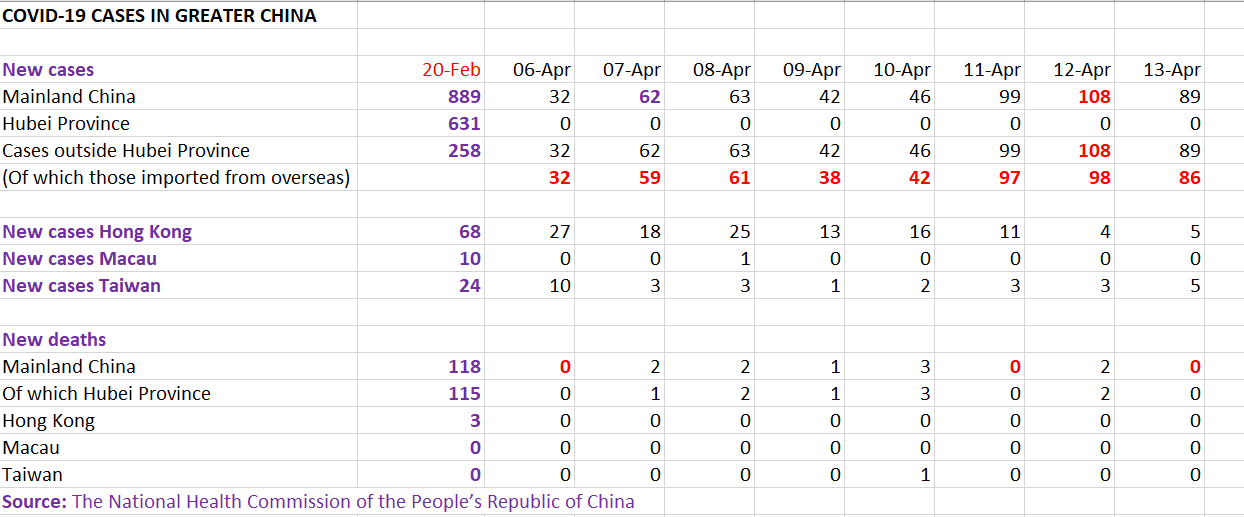
International

13 April
US
Clarification:
The Board of Airport Commissioners at Los Angeles World Airports (LAWA) will continue discussions regarding proposed concessionaire relief measures at their next Board meeting this coming Thursday (16 April). [Our earlier report suggested the relief decision had been taken]
The Board has been asked to approve a LAWA management proposal to move all concessionaires with contracts based on Minimum Annual Guarantee (MAG) fee payments to percentage rent-based agreements. The move would be effective from 1 April to 30 June. In a related move to aid partners, it is proposed that the percentage rent due can be paid in instalments from 1 July through to 1 December.
The proposal to alter the contracts for the period (made late last week) comes amid a fall of over -90% in traffic and with 68% of concessions closed temporarily.
Three separate agreements cover retail and F&B (including URW, DFS Group, Areas, HMSHost, Hudson, XpresSpa and others); advertising (JCDecaux) and rental cars.
For the full story click here.
South Korea

International

Greater China

![]() Yesterday saw a continuation in the rise of imported COVID-19 infections, which were responsible for 98 out of 108 new cases, according to latest figures from the National Health Commission of the People’s Republic of China. Of the 10 indigenous cases, 7 were in Heilongjiang province, which borders Russia to the north and east. Authorities in Harbin, the Heilongjiang capital, have imposed a 28-day quarantine in a dedicated facility for all people arriving from abroad. The other 3 domestic cases were in Guangdong province.
Yesterday saw a continuation in the rise of imported COVID-19 infections, which were responsible for 98 out of 108 new cases, according to latest figures from the National Health Commission of the People’s Republic of China. Of the 10 indigenous cases, 7 were in Heilongjiang province, which borders Russia to the north and east. Authorities in Harbin, the Heilongjiang capital, have imposed a 28-day quarantine in a dedicated facility for all people arriving from abroad. The other 3 domestic cases were in Guangdong province.
Hubei province, whose capital Wuhan was the original epicentre of the outbreak, again reported no new cases of confirmed infections and no new suspected infections. Two people died in Wuhan while 57 patients were released from hospital there after being cured.
12 April
China (Hong Kong)
A sign of how international travel may look in the coming months until a vaccine is in widespread use? Hong Kong’s Department of Health has strengthened health quarantine and COVID-19 testing arrangements for inbound travellers starting 8 April. Upon arrival, all inbound travellers from all flights are now required to immediately take a shuttle bus from Hong Kong International Airport to the temporary specimen collection centre at AsiaWorld-Expo to allow the collection of deep throat saliva samples, which will be tested for COVID-19 infection.
Additionally, all Hong Kong residents coming from Mainland China, Macao, Taiwan and other overseas countries/regions by plane are subject to a 14-day compulsory quarantine.
All Hong Kong residents who have been to Daegu and Gyeongsangbuk-do in Korea; Iran; and Emilia-Romagna, Lombardy and Veneto regions in Italy over the 14 days prior to arrival in Hong Kong, are required to stay in a dedicated centre for quarantine.
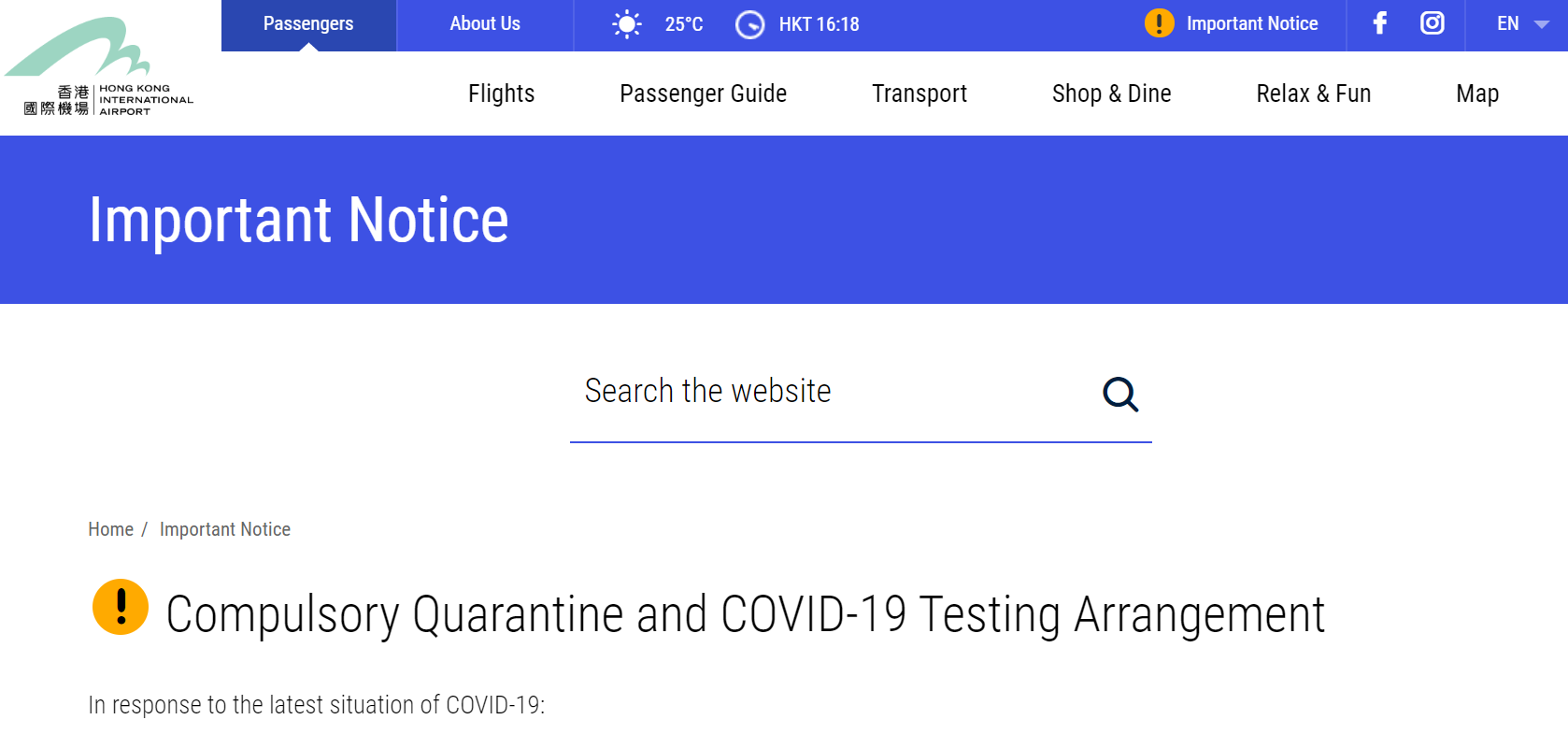


South Korea
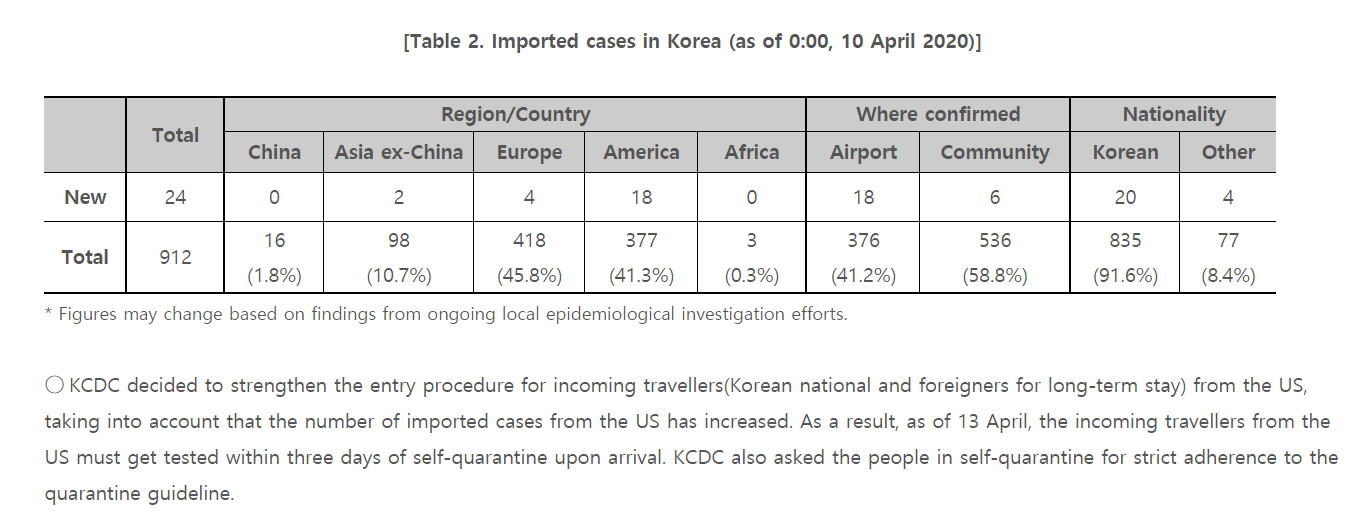

International
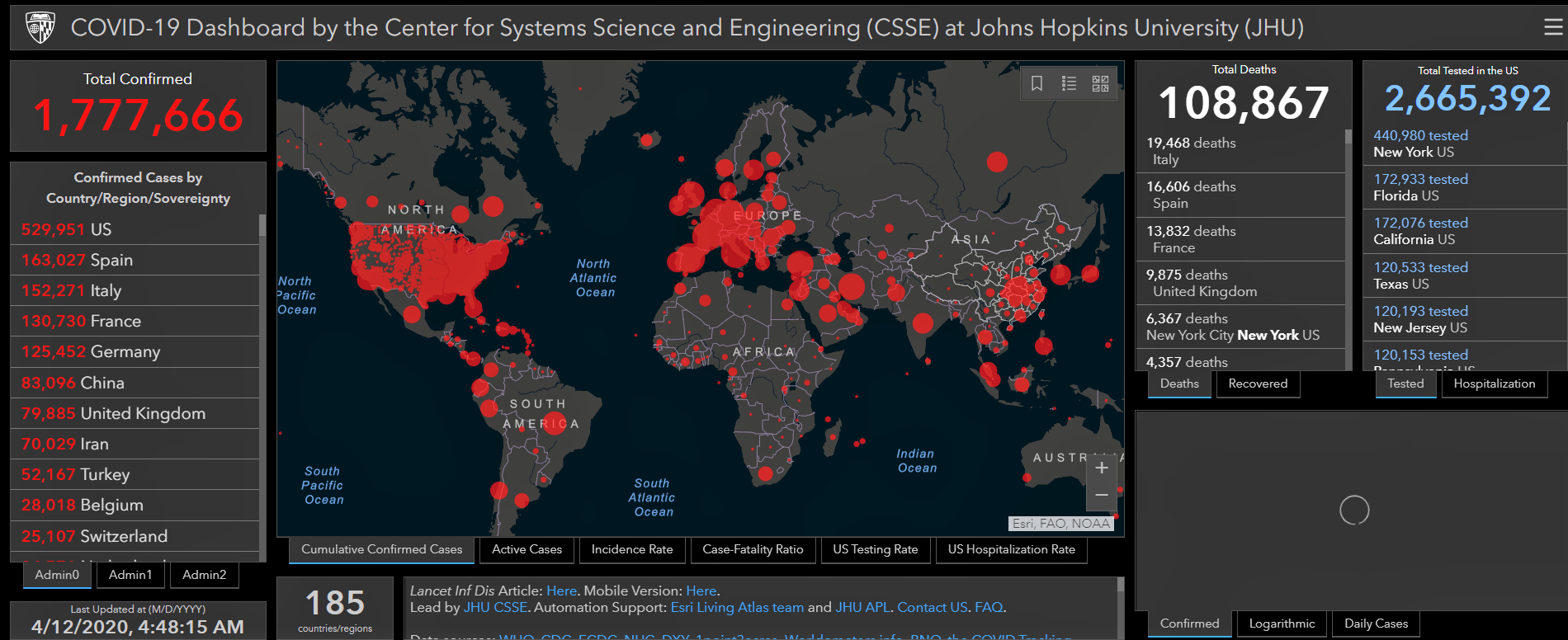
Greater China

11 April
Pakistan
The government of Pakistan has extended the suspension of international and domestic commercial flights until at least 21 April. The limited number of international services, mainly repatriation and emergency flights, provided by national carrier Pakistan International Airlines, will land during this period at Islamabad Airport only.
US
The country now has over half a million cases (501,609 as of 3.22am this morning New York time). New York state alone has more cases than any country in the world outside the US. 5,820 of the 102,782 deaths worldwide have been suffered in New York city.
Greater China

International

South Korea

10 April
USA
The US Centers for Disease Control and Prevention (CDC) today extended a No Sail Order for all cruise ships to or from US ports.
“We are working with the cruise line industry to address the health and safety of crew at sea as well as communities surrounding US cruise ship points of entry,” said CDC Director Robert Redfield. “The measures we are taking today to stop the spread of COVID-19 are necessary to protect Americans, and we will continue to provide critical public health guidance to the industry to limit the impacts of COVID-19 on its workforce throughout the remainder of this pandemic.”
As reported, ocean-going cruise lines temporarily suspended cruise ship operations from US ports for an initial 30 days from 14 March. The industry has since been working to build an “illness response framework” to combat COVID-19 on ships with international crew members who remain on board and at sea, noted the CDC.
Currently, there are around 100 cruise ships at sea off the US East Coast, West Coast and Gulf Coast, with nearly 80,000 crew onboard. Additionally, CDC said it is aware of 20 cruise ships at port or anchorage in the US with known or suspected COVID-19 infection among the crew who remain onboard.
Japan
Narita International Airport has closed one of its runways and further curtailed commercial activity across its terminals as a result of the COVID-19 pandemic. With numbers rising sharply in Japan, the government declared a state of emergency in Tokyo, Osaka and five other prefectures earlier this week.
Narita Airport said in a statement today: “The number of aircraft movements at Narita Airport has significantly decreased, and the recovery is expected to take a considerable amount of time. Therefore, to ensure operational safety and efficiency at the airport while also striving to prevent further spread of the pandemic, we have decided to close Runway B and move to Single Runway Operations using Runway A.”
Most duty free and other retail stores, which had remained open through March, have either closed in recent days or are about to shut down temporarily.
In Terminal 1 these include ANA Duty & Tax Free (from 11 April to 6 May), Japan Duty Free (JATCo) from 1 April to 31 May and FaSoLa Tax Free and souvenir stores (most from 3-24 April initially). Many luxury boutiques closed in recent days and will not reopen until late April or May (dates to be reviewed).
The main T1 FaSoLa cosmetics & perfumes and liquor & tobacco units remain open from 8am to 6pm, though the stores in the South Wing and satellites are closed.
In Terminal 2 airside, the main FaSoLa P&C and liquor & tobacco stores remain open (9.30-5.30 daily) though most are closed. JAL Duty Free’s main store is open from 8am to 4pm. The JATCO-run duty free and Victoria’s Secret stores are closed. All other luxury boutiques are closed until late April or May.
In T3, the FaSoLa main duty free remains open on restricted operating hours. All arrivals duty free shops across the three terminals are closed.
USA
The board of Dallas Fort Worth International Airport last night ratified a much-needed, progressive plan to move all airport commercial partners from Minimum Annual Guarantee-based (MAG) fee models to a rent structure based on a percentage of sales. The scheme, which was proposed last month, is backdated to 1 March and will run until 30 September.
Separately, the board ratified a change to the structure of the duty free contract managed by 3Sixty Duty Free, also effective from 1 March.
For the full story, click here.
Meanwhile, San Francisco International Airport’s US$1 billion Terminal 3 West project – involving 190,000sq ft new food & beverage and retail space – will now not open earlier than the spring of 2024 after the commencement of construction works was delayed for at least six months.
The start of construction had been scheduled for June this year, but dramatically reduced passenger and flight activity resulting from the COVID-19 crisis has forced a postponement.
For the full story, click here.
Greater China
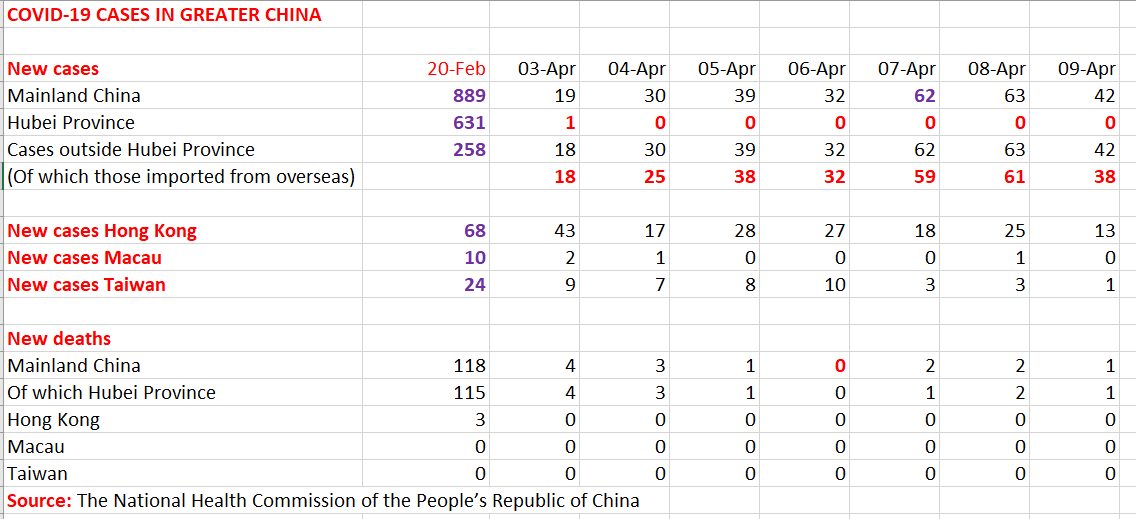
South Korea


9 April
South Korea
None of the three large retailers (Lotte Duty Free, The Shilla Duty Free and Shinsegae Duty Free) have yet applied for the six-month 20% Minimum Annual Guarantee reduction offered by the South Korean government and Incheon International Airport Corporation (IIAC).
The reluctance of these retailers to accept relief is due to a condition stating that recipients of the MAG cut would forego any discounts next year from any decline in passenger traffic.
For more details on this important story from Senior Retail and Commercial Analyst Min Yong Jung, click here.
Finland
Airport company Finavia expects a €100 million hit to annual revenues as a result of the crisis, with traffic across the network forecast to fall by one-third compared to 2019.
In March, Helsinki Airport passenger numbers fell by -57.2% compared to the same period last year, with traffic across the Finavia portfolio down by -20% in Q1.
On a normal day, said Finavia, an average of 57,000 passengers would pass through Helsinki Airport. At the moment, the airport serves just over 1,000 passengers daily, a figure that continues to fall.
The impact on Chinese routes is especially acute: passenger volumes on routes to and from China fell by -95.8% in March compared to the previous year.
Finavia CEO Kimmo Mäki said: “The coronavirus pandemic has made itself felt in many ways at Finavia’s airports. All of us operating at airports have been worried about the safety of passengers. The pandemic, which became a worldwide outbreak in only a few weeks, has affected the entire industry in very significant and far-reaching ways. The situation has also had an effect on airlines and companies that operate at airports as well as jobs and investments.
“To overcome this challenging situation together with the airport community, we have provided our tenants and partners with significant relief. We have also decided to continue the Helsinki Airport Development Programme for the time being to guarantee Finland’s accessibility and competitiveness also in the future.”
Singapore
Changi Airport Group’s ecommerce platform iShopChangi is offering tax free shopping for non-travellers during the COVID-19 crisis, with free local delivery in Singapore.
Customers can benefit from a tax-absorbed shopping experience without travelling to the airport, by shopping iShopChangi’s ‘Non-Traveller’ product offer, said the company. The cross-category range offers over 5,000 items.
The delivery service is available for a minimum spend of S$99 and is part of a series of online shopping promotions.
Full story here.
Europe
Figures for March show that passenger traffic at European airports fell by -59.5% year-on-year, pulling Q1 numbers down by -21%.
While Europe’s airports handled 5,120,000 passengers on 1 March (down by -11.7% compared to the same day in 2019), that number had reduced to just 174,000 by 31 March, a fall of -97.1% compared to the same day in 2019.
Director General Olivier Jankovec said: “This is like nothing we have seen before. In the global financial crisis, it took Europe’s airports 12 months in 2009 to lose 100 million passengers. With COVID-19, it just took 31 days – the month of March – for that same passenger volume and more to vanish.”

Thailand
Having introduced a ban on international flights to Thailand on 7 April, the Civil Aviation Authority of Thailand has extended the measure until 18 April. The move was confirmed today in a statement by Airports of Thailand.
As reported, operations at Phuket International Airport have been suspended from 10 to 30 April. That followed the local government’s announcement that it was temporarily closing all land and sea entry and exit points from 30 March until 30 April.
South Korea

International

Greater China

April
Denmark
Copenhagen Airports and the few airlines still maintaining scheduled flights in and out of CPH have agreed a plan for flights to operate during the day and evening hours. Night operations will initially be suspended for a three-week period from Monday 13 April, after which the airport will review the situation with the airlines and the groundhandlers each Friday.
The suspension of night operations applies only to scheduled commercial flights and excludes cargo traffic. “We are also maintaining capacity to ensure we can accommodate special flights such as those bringing home Danish residents being evacuated from other countries, ambulance flights, diplomatic flights, and such,” said Director of Traffic Dan Meincke.
There are four groundhandlers at the airport: SGH, Aviator, Menzies and CFS. They handle aircraft, passengers and cargo on behalf of the airlines. Like the airlines, the groundhandlers have also been severely affected by the crisis that has hit the aviation industry. “By suspending commercial night flights, we can help ease the cost pressure for the groundhandlers, so they won’t have to schedule a lot of people for night duty. The same goes for Falck, the assistance and emergency services provider at the airport,” said Meincke.
Copenhagen Airport is cutting operating costs in a rotation scheme in which 2,200 of its 2,600 employees (corresponding to 1,600 full-time employees) are temporarily laid off with wage compensation. At the same time, a large number of investments and projects have been put on hold. Overall, costs may be cut by up to DKE1 billion (US$146 million) during the rest of 2020.
Qatar
Qatar Airways Cargo has increased services around the world, giving priority to the transportation of essential medical supplies and aid relief.
The airline has transported over 500,000 kg of medical supplies — equating to 500 fully loading Boeing 777 freighters — in the last month alone. It will continue to operate its full freighter fleet as per schedule and operate belly-hold cargo flights whenever possible.
Qatar Airways Cargo has also introduced additional cargo capacity to Shanghai, Guangzhou, Paris, Amsterdam, Muscat, Kuwait, Delhi, Beijing, and Melbourne. It is working closely with national governments to ensure the delivery of both humanitarian aid and medical supplies wherever necessary.
The company has also implemented strict ground handling protocols and hygiene standards — minimising contact between staff and adhering to social distancing guidelines — to ensure the safety of both crew and cargo.

According to the company, all freighters and passenger aircrafts are equipped with protective face masks, as well as hand sanitisers and gloves for crew and staff, who undergo regular screenings. The airline has also assured partners that it is regularly disinfecting aircrafts using cleaning materials recommended by the International Air Transport Association (IATA) and the World Health Organization (WHO).
“Now, more than ever it is important to support global trade that ensures the supply of essential goods and vital aid worldwide. I am thankful to the airport authorities, ground handlers, cargo agents and governments around the world who have helped us increase our services to fulfil the demand for time sensitive freight,” commented Qatar Airways Group Chief Executive, His Excellency Akbar Al Baker.
His Excellency added, “I also want to thank many of our long-standing commercial customers that have supported us to prioritise humanitarian relief shipments to badly affected regions over their existing commercial arrangements. We are all in this together and are glad to be of service to communities around the world during this difficult time.”
USA
Miami-Dade County Commissioners have approved a financial relief plan for business partners that includes the waiving of minimum guarantees and rents for retailers, restaurateurs and other service providers at Miami International Airport.
The airport company valued the full package at US$64.8 million over an initial three-month period, which is backdated to begin on 1 March.
Europe
New dates have been announced for the ACI Europe Commercial & Retail Conference & Exhibition following a postponement due to COVID-19. The event, which had been due to take place later this month in Prague, will instead be staged between 8-10 December at Amsterdam Schiphol’s RAI Amsterdam Convention Centre.
The gathering will now be co-staged with the ACI Airport Exchange event, which was originally being held the week prior (1-3 December). Both events are being hosted by the Royal Schiphol Group.
Separately, the ACI Europe Annual Assembly & Congress will now be held on 20-22 October, in Geneva, Switzerland.
South Korea
Lotte Duty Free and Shilla Duty Free, the country largest duty free retailers, have withdrawn their respective bids for the Incheon International Airport Terminal 1 concessions due to the COVID-19 crisis – even though they must now give up their deposit guarantees.
As reported on 9 March, Shilla and Lotte were named preferred bidders in the T1 tender for the two liquor & tobacco concessions (DF3 and DF4). Hyundai Department Store Duty Free, the preferred bidder for DF7 (fashion & miscellaneous), remains the only large retailer to sign a standard agreement on lease. Hyundai confirmed to The Moodie Davitt Report that no discussions have taken place to relinquish its position – the company’s first opportunity to operate an airport duty free concession. For full story click here.
UK
Gatwick Airport is supporting the UK’s coronavirus response by providing use of its long-stay car park as a drive-through testing centre.
Initially for use by NHS staff and invited key workers, the site opened today and will be available between 09:00 – 17:00 daily, on an appointment-only basis.
Gatwick Airport Chief Executive Stewart Wingate said: “We are pleased to support the national effort against the spread of the coronavirus by allowing Gatwick facilities to be used as a vital testing centre for frontline health workers. We have the space available at Gatwick to be able to host such a large-scale operation. Alongside keeping the airport open to support repatriation flights, amongst others, we are happy to be able to support the NHS, Government and the country in whatever way we can.”
UK Health Minister Lord Bethell said: “The Government is rapidly scaling up the national effort to boost testing capacity for coronavirus to protect the vulnerable, support our NHS, and ultimately save lives. This new service will help end the uncertainty of whether NHS and social care staff need to stay at home meaning those who test negative will be able to return to work. This is a national effort and we are proud to be working with a number of partners to turn this ambition into a reality and roll out additional capacity to where it is needed.”
Denmark

South Korea

China
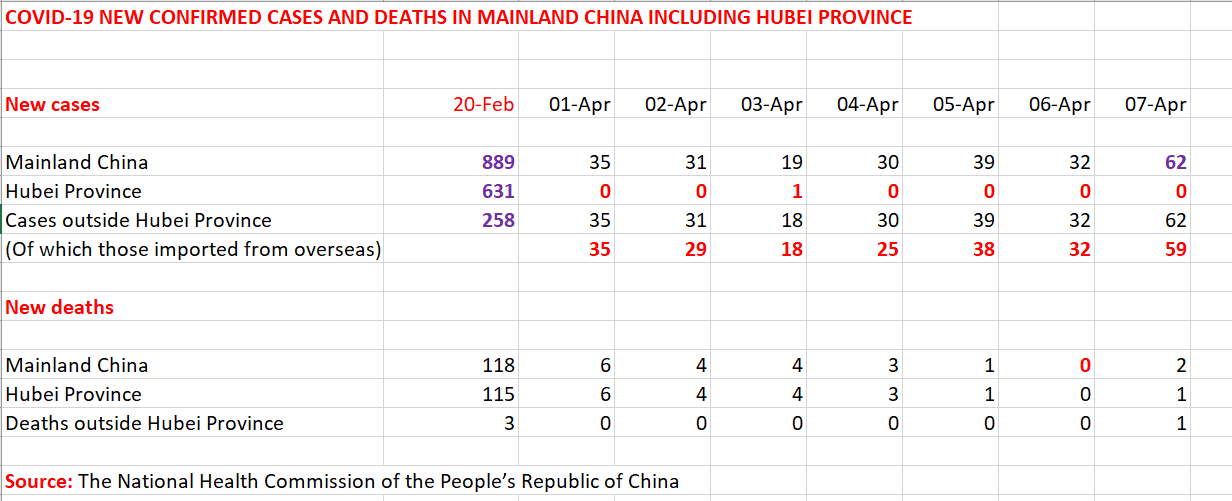

International

7 April
Thailand
The local government of Phuket and Airports of Thailand have announced the closure of Phuket International Airport from 10 April to 30 April.
This follows the local government’s announcement that it will temporarily close all land and sea entry and exit points from 30 March until 30 April.
According to local news platform The Phuket News, the closure follows the formal request made by Phuket Governor Phakapong Tavipatana on 30 March. The notice was released in advance to allow the Civil Aviation Authority of Thailand (CAAT) and other tourism-related offices to make the necessary preparations.
France
Lagardère Travel Retail parent company Lagardère Group will not pay a dividend this year. Instead it will use €5 million set aside for that purpose to go towards a new Covid solidarity fund.
The company said: “The purpose of this fund is to provide backing for the group’s initiatives in support of its employees worldwide and, where possible, its partners, all of whom are suffering the severe effects of this exceptional crisis.
“These measures are in addition to the major action plans implemented by the group from the outset of the crisis to mitigate its financial impacts and to enable operations to resume as soon as conditions allow.”
Netherlands

Finland
Finland today announced measures to tighten rules on cross-border traffic in an effort to prevent the spread of the coronavirus. Unless they are deemed essential workers, all visitors to Finland must undergo a 14-day quarantine. New rules take effect on 11 April and run at least until 13 May.
Importantly, the government has recommended that shipping companies operating to Finland from Sweden, Estonia and Germany stop the sale of passenger tickets (with the exception of goods and freight transport). This means an effective ban on inbound ferry passenger traffic from 11 April, with cruise & ferry companies forced to suspend foot and car traffic on their routes to the Nordic state.
For the region’s largest cruise ferry group, Tallink, it will mean its vessels Megastar, Galaxy and Baltic Princess cannot transport passengers to Finland, although travellers can continue to travel outbound from Finland to Sweden and Estonia. Only travellers coming from the Aland Islands will be permitted to enter Finland.
Finland had already restricted movements across its borders from neighbouring states. Traffic volumes at the land borders between Finland and Sweden and between Finland and Norway have decreased from normal levels by around 95%, said a government statement.
The main airports remain open, with limited activity, with all flights at Helsinki Airport operating from T2 only since 19 March. All but essential shops are closed, as are most restaurants.
Japan
Japan’s Prime Minister Shinzo Abe today declared a state of emergency amid heightened concerns over the spread of COVID-19. The declaration covers Tokyo, Osaka and the Saitama, Kanagawa, Chiba, Hyogo and Fukuoka prefectures.
Previously, effective from 3 April, Japan extended the list of states from which visitors (or those who have been to these states in the past 14 days) cannot enter the country. The list includes China, Singapore, Vietnam, South Korea, Taiwan, Thailand, Malaysia, Philippines, Australia, New Zealand, US, Canada and most European countries (EU and non-EU).
Airports across the country have scaled back their operations due to reduced flight frequencies, with cuts to operating hours for most shops and restaurants.
Germany

Frankfurt Airport has bundled all passenger-handling operations in Terminal 1, Concourses B and C, effective today (7 April 7). Passenger handling in T2 has been suspended until further notice. Passenger repatriation flights continue. Cargo flights show a +20% increase year-on-year, a gain that compensates only partially for the decline in belly freight (shipped on passenger aircraft). Partial renovation of the south runway commenced as scheduled on 6 April.
China

We deploy, unusually, bold type for emphasis in the paragraphs below as the statistics cited are so important.
On 6 April, 31 provincial-level regions in Mainland China (as well as the Xinjiang Production and Construction Corps) reported 32 new confirmed infections (all imported), 12 new suspected infections (again all imported), and no deaths, according to The National Health Commission of the People’s Republic of China. 89 patients were released from hospital after being cured. 2,365 people who had had close contact with infected patients were freed from medical observation. Serious cases decreased by 54.
By midnight 6 April, the National Health Commission had reported 81,740 confirmed cases and 3,331 deaths in 31 provincial-level regions on the Chinese Mainland and the Xinjiang Production and Construction Corps. A total of 77,167 patients had been cured and discharged from hospital.
On 6 April, Hubei province, home to the original epicentre of Wuhan, reported no new cases of confirmed infections, no new cases of suspected infections, and no deaths. 59 patients (all in Wuhan) were released from hospital after being cured.
International

South Korea

6 April
Hong Kong (China)

Europe
New dates have been announced for the ACI Europe Commercial & Retail Conference & Exhibition following a postponement due to COVID-19. The event, which had been due to take place later this month, will instead be staged between 8-10 December 2020 at Amsterdam Schiphol Airport’s RAI Amsterdam Convention Centre.
The gathering will now be co-staged with the ACI Airport Exchange event, which was originally being held the week prior (1-3 December). Both events are being hosted by the Royal Schiphol Group. For full story click here.
International
The latest data from flight analyst OAG underlines the sharp continuing reduction in airline seat capacity during the COVID-19 crisis.
A further 11.1 million seats were removed from the OAG database of schedules this week, or a -22.7% reduction. Weekly global seat capacity is now just above one-third of that originally scheduled for this week, with further cuts advised by airlines through to the end of May.

A reduction of almost one-third in North America means 5.5 million fewer seats, while the Southwest Pacific and South America (southern) regions each saw nearly half of their scheduled capacity wiped out in one week.

The capacity gap between the US and China is now 3.1 million seats per week, reports OAG, although both markets are around half the size they were 12 weeks ago.
Last week’s announcement by the Chinese government that all airlines must cut international services is reflected in the latest data, with a fall of 290,000 seats from that market, including 131,000 from international. Airlines continue to balance available capacity and demand, which is why domestic seat numbers have fallen slightly this week, said OAG.

Singapore
Changi Airport Group (CAG) today announced that operations at Terminal 2 will be suspended for 18 months from 1 May. The airport company said it is making the move “in view of the steep decline in passenger traffic and the likelihood that air travel demand will not return to pre-Covid-19 levels in the near term”.
CAG will accelerate the refurbishment of T2 during the period, and is talking to concession partners about the impact on them, it says. More details here.
China

South Korea

International

UK


“We should take comfort that while we may have more still to endure, better days will return: we will be with our friends again; we will be with our families again; we will meet again.”
In an address to the nation last night the British Monarch, Queen Elizabeth II, called on the stirring words of ‘We’ll meet again’, the 1939 British wartime song made famous by singer Vera Lynn and composed and written by English songwriters Ross Parker and Hughie Charles.
We’ll meet again
Don’t know where
Don’t know when
But I know we’ll meet again some sunny day
Keep smiling through
Just like you always do
‘Till the blue skies drive the dark clouds far away
– We’ll meet again, Vera Lynn
In a moving and powerful speech, the Queen said: “I hope in the years to come everyone will be able to take pride in how they responded to this challenge. And those who come after us will say the Britons of this generation were as strong as any. That the attributes of self-discipline, of quiet good-humoured resolve and of fellow-feeling still characterise this country. The pride in who we are is not a part of our past, it defines our present and our future.
“While we have faced challenges before, this one is different. This time we join with all nations across the globe in a common endeavour, using the great advances of science and our instinctive compassion to heal. We will succeed – and that success will belong to every one of us.”
[Edited. For full text click here.]
5 April
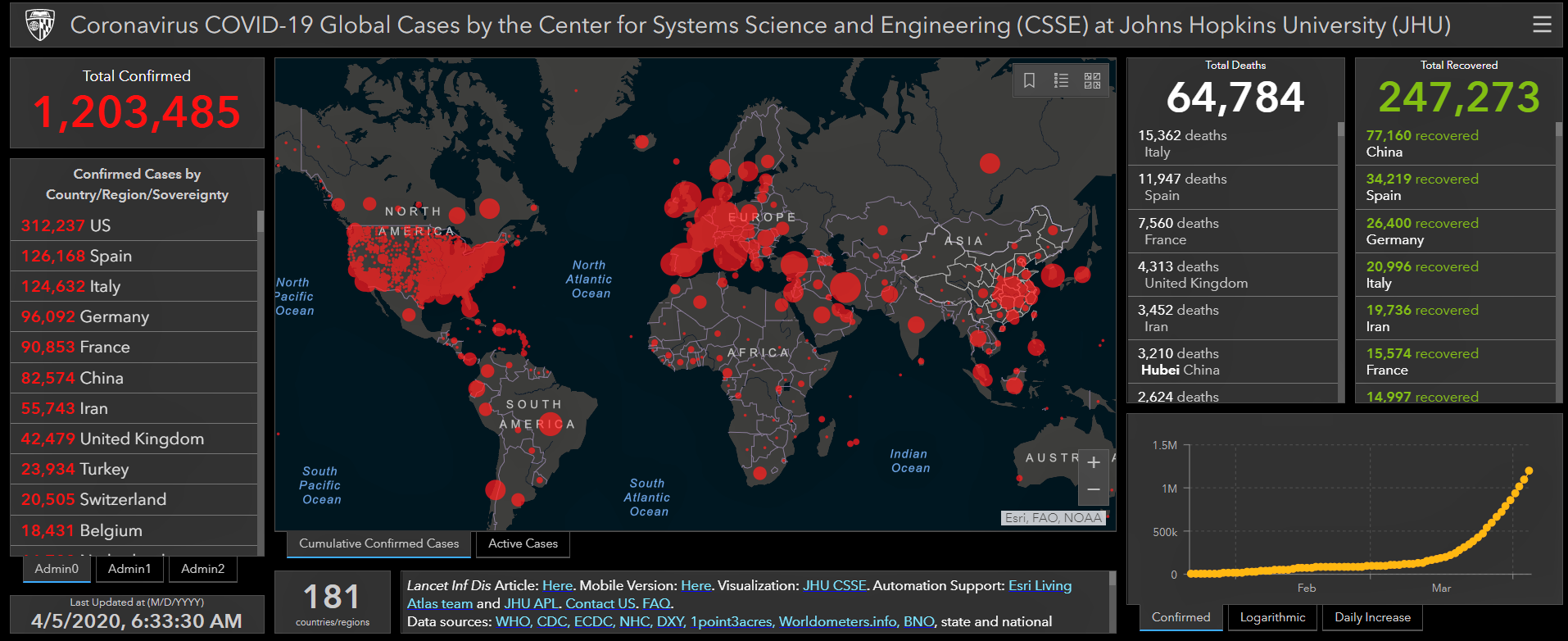
South Korea
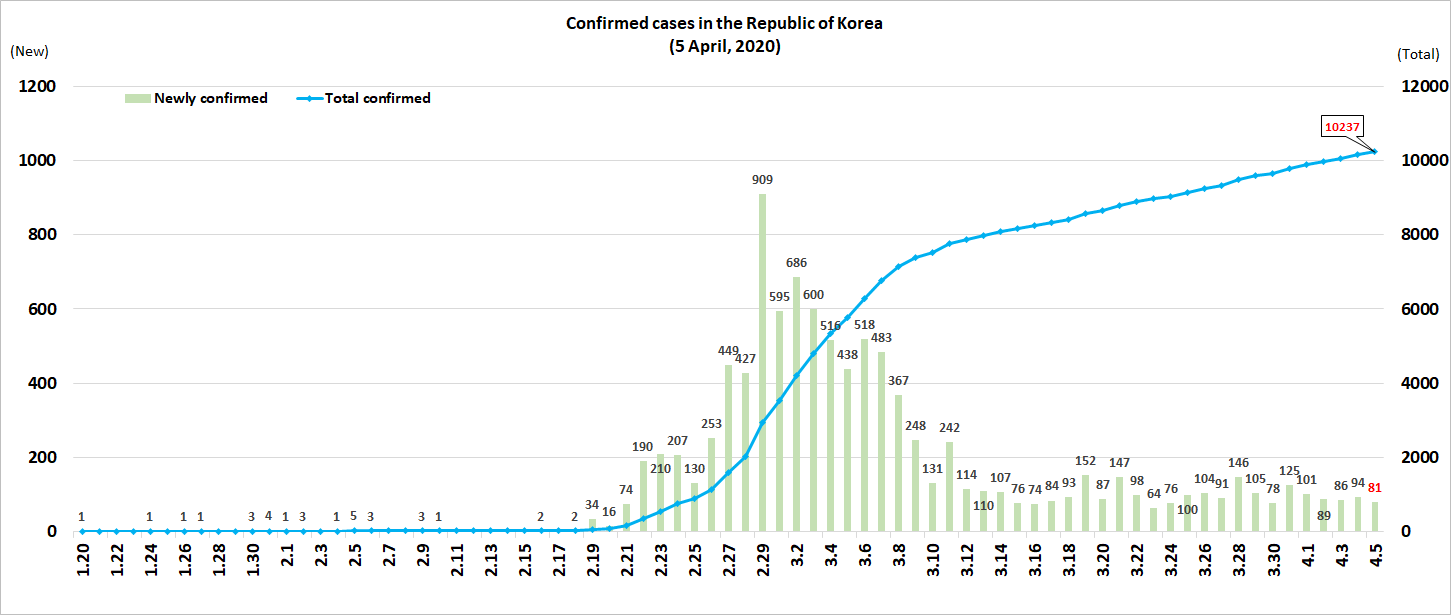
China


China will make preventing imported cases the top priority in the country’s COVID-19 response and even for a “prolonged” period of time, President Xi Jinping said on 1 April, according to a report issued by state news agency Xinhua.
“The epidemic situation in China is moving steadily in a positive direction, and the peak of the current COVID-19 outbreak is over in the country,” Xi said. However, the risk posed by imported cases has sharply risen as the epidemic is accelerating its spread across the world, he said. [Source: Xinhua.net]
4 April
Scotland
Glasgow Airport’s long-stay car park is being transformed into a drive-thru mobile testing facility to support the country’s response to the COVID-19 pandemic.
The 17-acre car park site is part of a series of measures being introduced to increase testing and response to the spread of COVID-19.
The Glasgow Airport-based facility is being introduced to test frontline NHS staff only at this stage and those being asked to provide swab samples from Sunday onwards will do so by appointment only. The testing centre is not open to the public.
Glasgow Airport Managing Director Mark Johnston said: “We are in regular contact with both the UK and Scottish Governments and have offered our facilities available to support the response to the COVID-19 pandemic.
“Glasgow Airport has the space and infrastructure capable of accommodating a large-scale testing area and we are only too happy to support in this way. The impact of this virus affects us all and Glasgow Airport, the wider AGS Airports group and our people will continue to support the national effort to overcome COVID-19 and stand ready to help in any way we can.”
Last week, Glasgow and the wider AGS Airports group donated £40,000 to homeless charity Simon Community Scotland’s #GiveHope appeal. The funding is being used to support the purchase of hotel accommodation for people who are homeless. They will be able to stay in single rooms, allowing them to self-isolate if necessary whilst accessing the range of services offered by the Simon Community.
International

China

South Korea
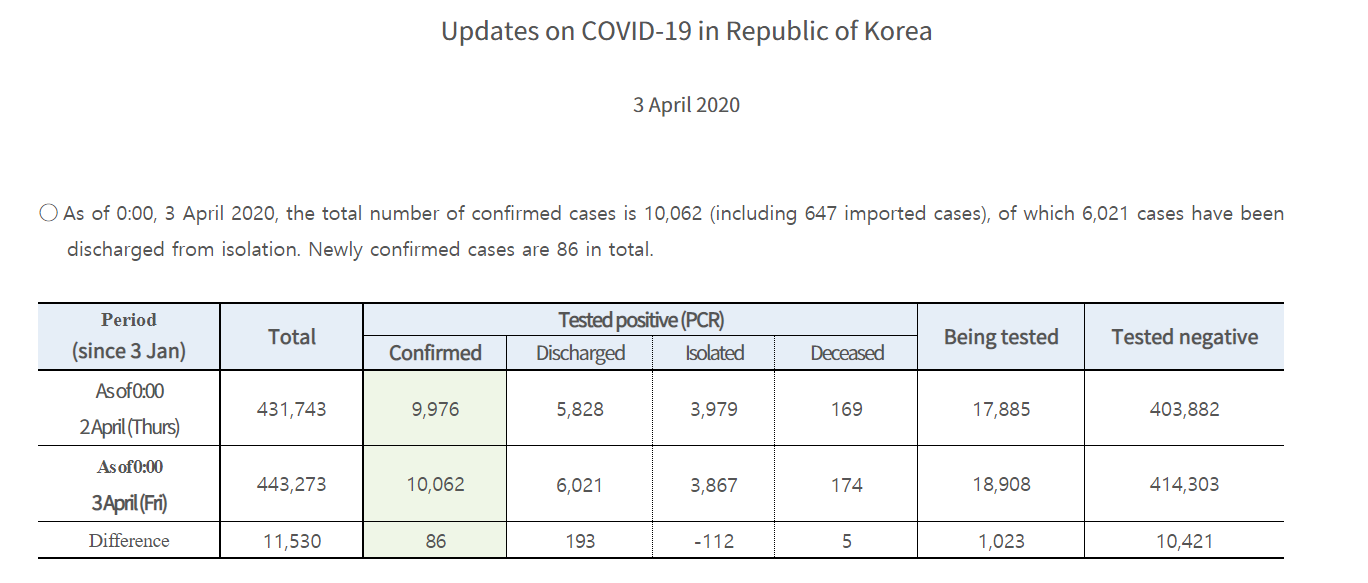
3 April
Dubai
In big breaking news, Sheikh Ahmed bin Saeed Al Maktoum. President of the Dubai Civil Aviation Authority and CEO & Chairman of Emirates Group has just tweeted that Emirates Airline will recommence flights (outbound from Dubai only) on 6 April.


South Korea
Shilla IPark Duty Free Shop in Yongsan, Seoul is closing down from 4 to 20 April due to the COVID-19 crisis.
The store is run HDC Shilla Duty Free Shop, a joint venture between construction giant HDC Group and The Shilla Duty Free parent company Hotel Shilla.

A notice alerting customers of the store closure (see below) was issued today with the company stating that the temporary closure represented an active participation in ‘social distancing’. The online store will continue to operate but with some products unavailable.
The popular downtown duty free retailer cut three hours off daily trading on 24 February but with plummeting visitor numbers stronger measures were required.
International
The profound impact of the crisis on air travel is highlighted by new data from travel analytics company ForwardKeys, showing that international airline seat capacity this week (to 5 April) fell to just 23% of the level available in the first week of April last year. Just 10 million seats were still in service worldwide, mainly to facilitate essential travel, compared with 44.2 million a year ago.
For the full story, click here.
Latin America
Airports Council International Latin America (ACI LAC) and Asociación Sudamericana de Tiendas Libres (ASUTIL) join the global call for financial relief from governments for the airports sector and for related services. In a joint statement, they urge Latin American governments to support airports and their business partners including duty free retailers amid the COVID-19 crisis.
The measures they propose include deferment of concession fees for airport companies, financial support for airports and their service providers to preserve liquidity, and suspension of tax payments.
The associations, which represent airports and the duty free sector in the region respectively, note that passenger traffic “has almost disappeared at many airports, negatively affecting the entire aviation ecosystem revenues and the financial sustainability of the industry”.
International

China

South Korea
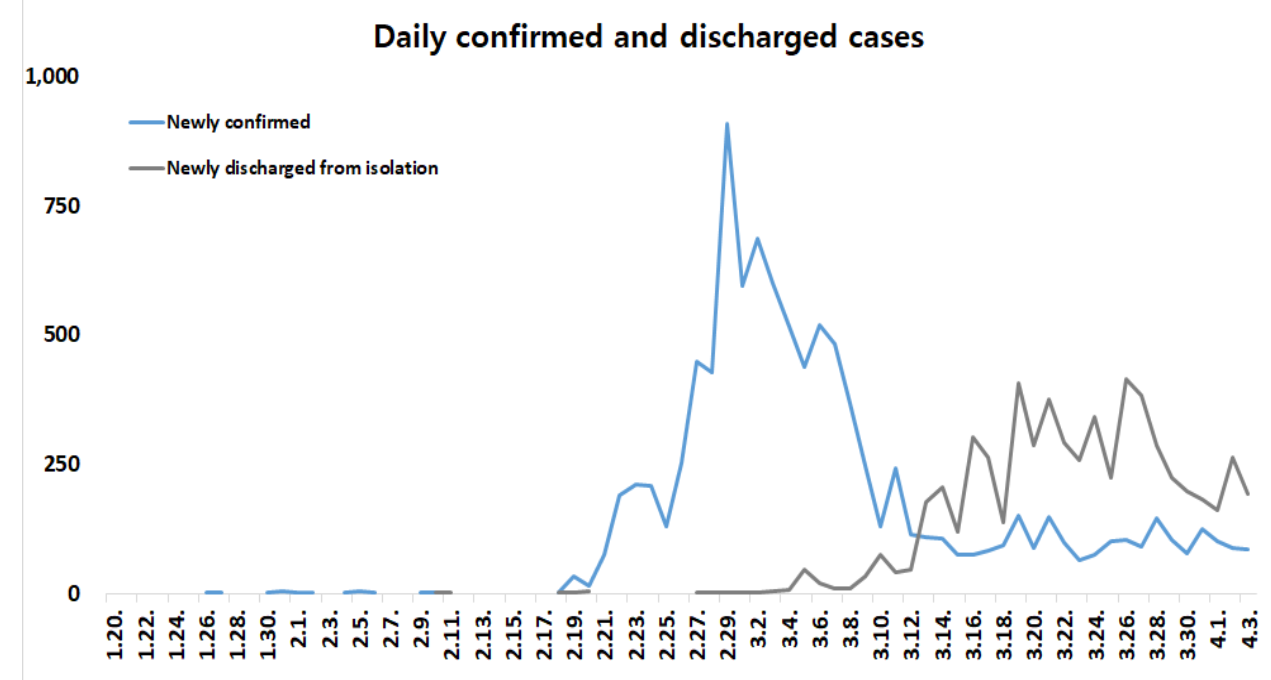

For our COVID-19 updates from pre-March 2 and dating back to January, click here.












